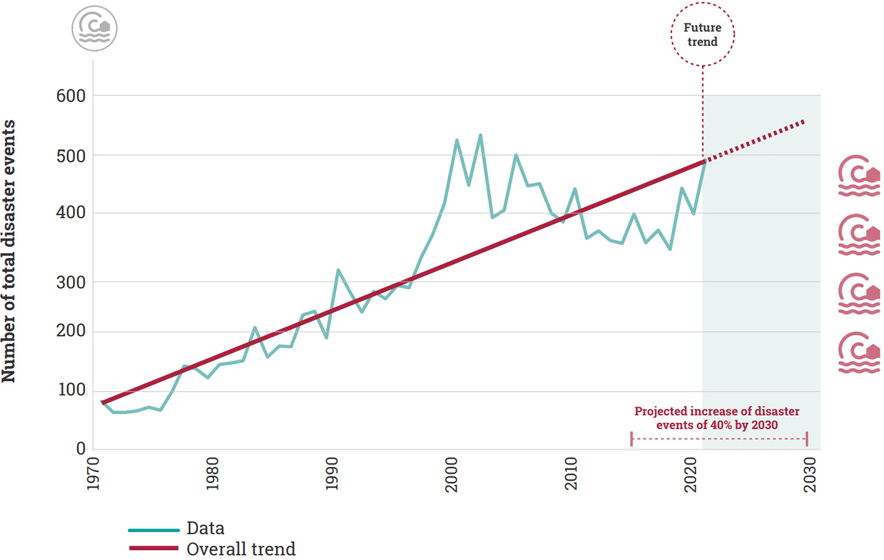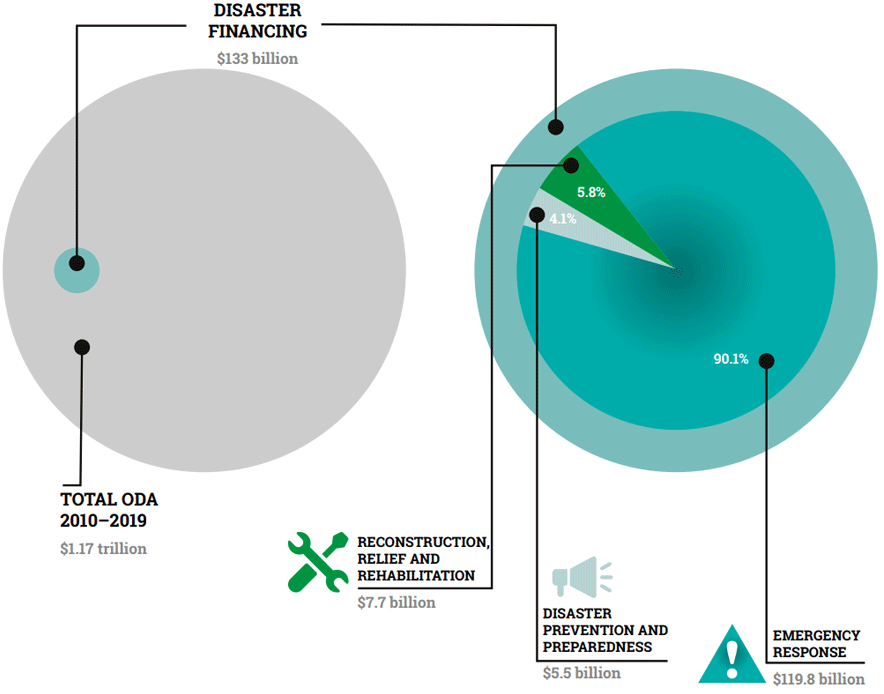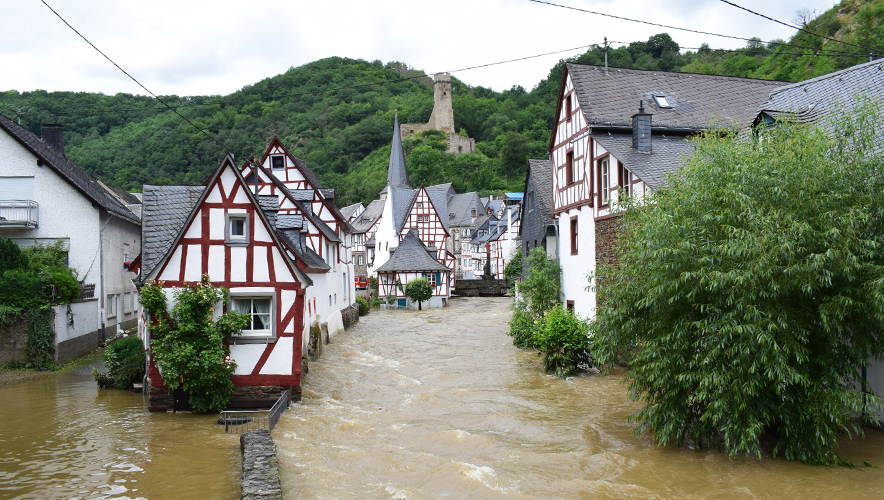UN Says Disaster Risks Are Increasing
Looking for a half-full glass? Or maybe a ray of sunshine to feel good on your face and raise your mood?
Do not turn to the United Nations. The Associated Press headline succinctly sums up the UN’s latest Global Assessment Report: “Weary of Many Disasters? UN Says Worse to Come.”
The UN Office for Disaster Risk Reduction (UNDRR) issued the report, and it is grim. Looking at a multi-decade trend line, the average number of medium- to large-scale disasters occurring worldwide is climbing higher at a disturbing rate.
Not strictly a climate change study, the UN examined major catastrophes through a risk lens. In the case of famine, for example, climate change plays a part, but so does the sociopolitical environment. The study does not take into account the war in Ukraine specifically, for example, but it’s easy to see how the war exacerbates the risk of famine already presented by major droughts.
As the UN graphic shows, the number in any given year will fluctuate substantially. The trendline for the 1970s, 1980s, and 1990s, shows a steady climb from 100 incidents per year to 300. At the turn of the century, the number of incidents spiked to more than 500 before receding. However, the report highlights the last five years show the increase has restarted. The trendline predicts an average of 560 annual major incidents by 2030.

Not surprisingly, with the increase in the number of incidents, the cost associated with them has also increased. Adjusting for inflation, the global cost increased from $70 billion in the years around 1990 to $170 billion today. The burden on poorer countries is also disproportionately higher. The developing world loses an average of one percent of its GDP per year to disasters, compared to 0.1 to 0.3 percent in developed countries.
“COVID-19 and climate change are rapidly making it clear that, in today’s crowded and interconnected world, disaster impacts increasingly cascade across geographies and sectors. Despite progress, risk creation is outstripping risk reduction. Disasters, economic loss, and the underlying vulnerabilities that drive risk, such as poverty and inequality, are increasing just as ecosystems and biospheres are at risk of collapse. Global systems are becoming more connected and therefore more vulnerable in an uncertain risk landscape,” according to the report’s summary.
From a risk perspective, public and private enterprises undervalue the risks associated with climate change and ecosystem destruction and simultaneously undervalue the positive social benefits of risk reduction.
Graphically it looks like this:

The circle on the left shows that the official development assistance (ODA) due to disasters is $1.17 trillion, while the amount allocated to disaster financing—$133 billion—is a tiny fraction of the amount actually spent. Digging deeper, of that $133 billion, almost all of it is devoted to emergency response, and less than 10 percent total goes to disaster prevention and preparedness and reconstruction, relief, and rehabilitation.
“Resilient investment is not even trackable as an investment on most public or private sector balance sheets,” it said in the report.
The report concludes with its recommendations, provided in summary form here:
1. Measure what we value.
1.1 Rework financial systems to account for the real costs of risk, particularly long-term risks, and rework investment and insurance systems to incentivize risk reduction.
1.2 Adapt national fiscal planning and risk financing to consider risk and uncertainty.
2. To help design systems to factor in how human minds make decisions about risk.
2.1 Recognize the role of people’s perceptions of risk and biases to close the gap between intention and action in reducing risk.
2.2 Recognize the value of risk analytics as a tool but not a panacea.
3. To help reconfigure governance and financial systems to work across silos and design in consultation with affected people.
3.1. Embrace a new “risk language” that cuts across multiple disciplines.
3.2 Step up participation, transparency, and citizen dialogue in risk decision-making to accelerate learning and necessary adjustments.
3.3 Enhance multi-scale risk management.
